The snow gums below the Aranda Bushland are some of the last survivors of what used to be a continuous ring of snow gums encircling the frosty, treeless flats of the Molonglo River, so they are important both historically and ecologically.
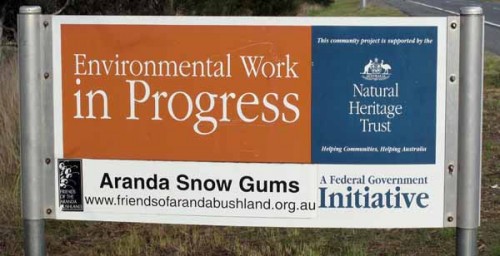
The land was taken out of rural lease in the 1960s for soil conservation purposes to keep silt out of the newly formed Lake Burley Griffin. Friends of Aranda Bushland’s Snow Gums project began with Peter Ormay’s vision to conserve, protect and interpret this area as the best remaining example of a frost hollow with its stand of Snow Gums and successive native vegetation zones stretching up through the Aranda Bushland.
On Saturday October 27th 1990 he took members of the newly formed Friends of Aranda Bushland on a familiarisation walk of the Aranda Snow Gums.
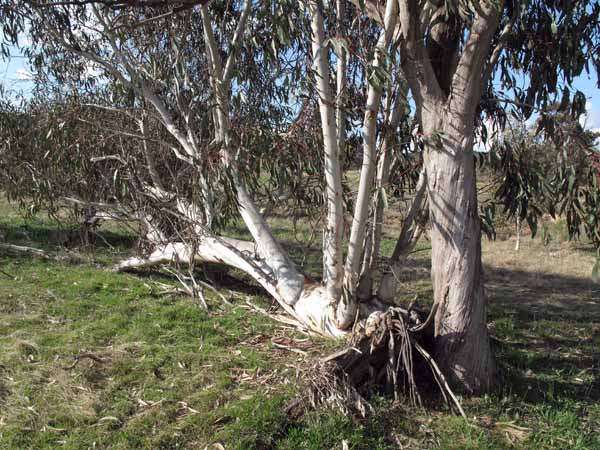
The Friends were galvanised into action when in the summer of 1992/3 drift from the spraying of briars caused the loss of about 70% of the foliage of the Snow Gums present, including 3 very ancient snow gums. The three subsequently died and their skeletons remain.
In 1994 Friends of Aranda Bushland began negotiations with the Parks and Conservation service management as to the best way to save the rest of the snow gums and to rehabilitate the area. It was agreed that Friends of Aranda Bushland would submit a proposal for Heritage Places registration. It was dated February 22nd 1994. The original proposal was for the whole of the rural lease south of the Aranda Bushland to William Hovell Drive. The citation was only for the stand of Snow Gums, which is only a small part of Block 1399.
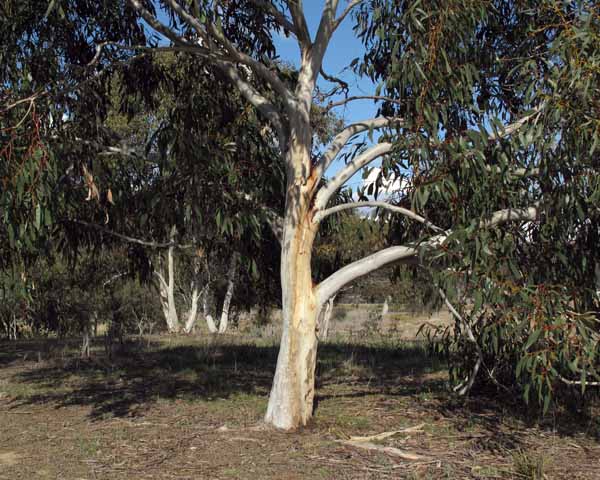
A site work plan for a Natural Heritage Trust grant was prepared in co-operation with Parks & Conservation Services. It included fencing to secure the area, rabbit control, replanting and weeding and a permanent monitoring program.
Vegetation was mapped by Robert Douglas and Peter Ormay for Friends of Aranda Bushland in October 1996. The maps are included in Our Patch. Initial plant surveys were conducted by SGAP Wednesday Walkers and FOG on 1 December 1999 and Peter Ormay 18 December 1999.The Aranda Snow Gums Heritage Site was included on the interim Heritage Places Register, which was gazetted in June 1998.
In October 1999 the Friends of Aranda Bushland received an initial Natural Heritage Grant for this project. As Friends of Aranda Bushland convenor at the time Jean Geue was also project officer. The first draft management plan was produced by Barry Griffiths in February 1999.

Students from Lake Ginninderra College germinated seeds from snow gums on the site and grew them to the planting stage. On August 30th 1999, Friends of Aranda Bushland and the students planted a total of 45 young seedlings to replace the loss of the three old mature trees, killed as a result of briar spraying.
In February 2000 the Minister for Urban Services, Brendan Smyth launched the Management Plan for Canberra Nature Park on the site and also announced that the area containing the Snow Gums Heritage Site, i.e. Soil Conservation Block 1399 was to be included in Aranda Bushland.
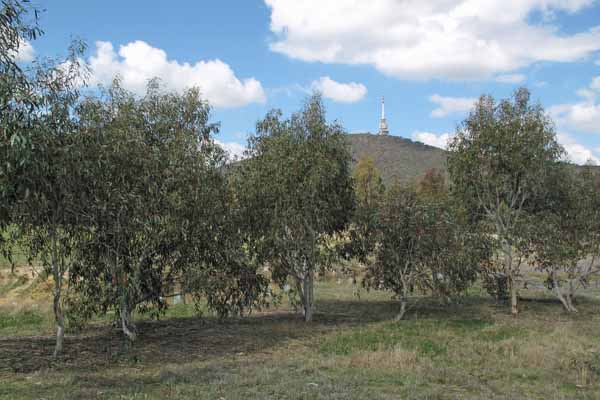
At a separate event, Senator Margaret Reid announced the award of NHT grants and presented Friends of Aranda Bushland with a “Work in Progress” roadside sign.
Block 1399, Soil Conservation Paddock or Smiths Paddock became Aranda Snow Gums nature reserve in 2002 as Variation 182 of the Territory Plan.
Working parties of Friends of Aranda Bushland monitored the trees and flora of the area and weeded by hand the ground adjacent to and within the drip line of the snow gums and much of Block 1399 itself. St. John’s wort, thistles, wild mustard and Paterson’s curse are major weeds in the area, together with a heavy infestation of phalaris.
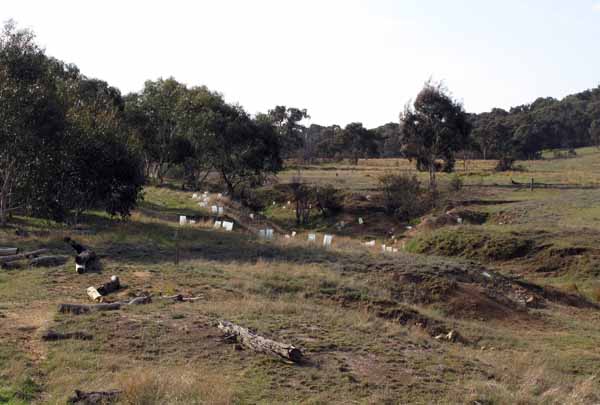
Where weeds are not removed before flowering, their seed heads are collected and removed from the site to reduce the seed burden of the area.
Friends of Aranda Bushland developed the Frost Hollow to Forest Walk to display the beauty and diversity of the natural environment in the area of the bushland.
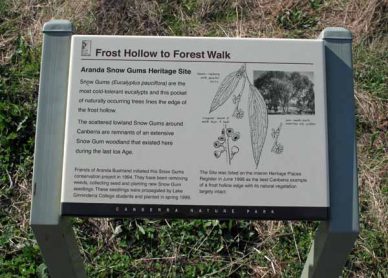
On a gentle/moderate 2 hour walk it is possible to experience several distinct vegetational zones: the natural grassland of the frost hollow, the snow gums, the yellow-box/red gum grassy woodland and the dry sclerophyll forest of the Aranda Bushland itself. Ten different species of eucalypt may be seen on the walk.
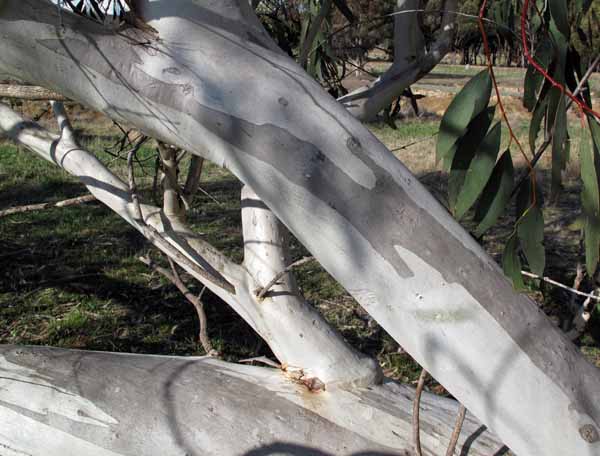
Guided walks have been organised since Arbor Day 1996 and each year since 1999. A pamphlet was printed to add to the pleasure and information gained from them.
Also, a map of the Snow Gums and its relationship to the Aranda Bushland can be viewed and downloaded here.
In 2000, the rural lessee gave permission for Friends of Aranda Bushland to fence a walkway, using NHT funds, through his property making it possible for visitors to complete the walk from the Snow Gums to the Bushland. In exchange, Friends of Aranda Bushland have a working party each year to remove woody weeds from the rural lease adjacent to the bushland.

NHT funds enabled work to begin on the design and construction of interpretive signs for the walk in 2001 and in June 19th 2002 the Frost Hollow to Forest Walk was officially launched by Wayne Berry MLA and attended by more than 65 members of the community.
This finalised the Natural Heritage Trust Aranda Snow Gums Project and the grant was acquitted on February 7th 2003.